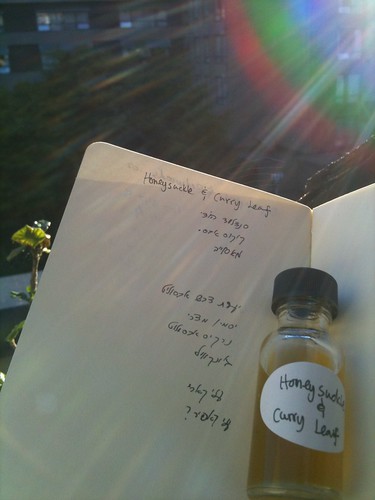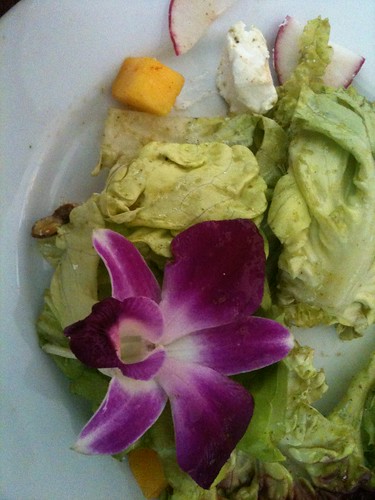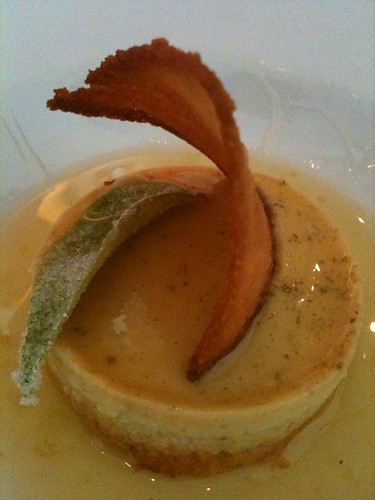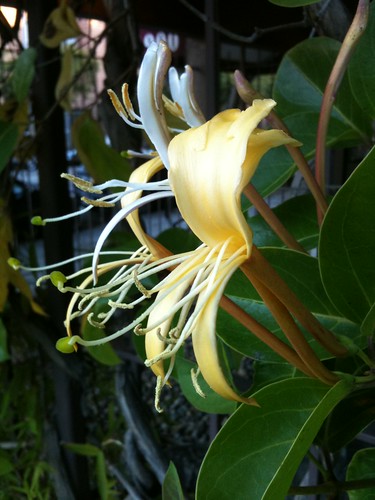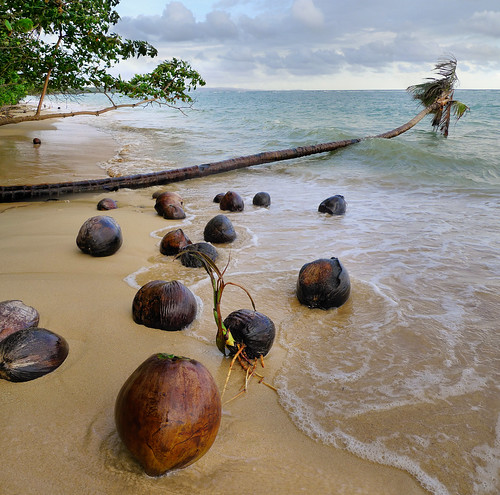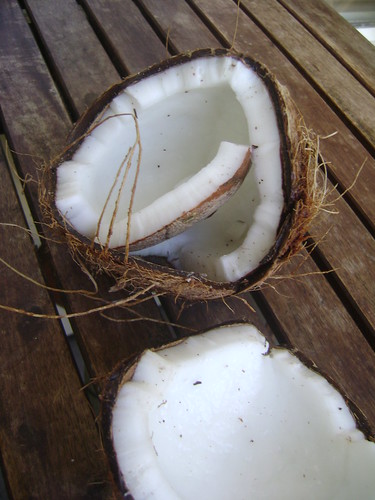
I promised you all a while back around Mother’s Day to tell you all about Tamya’s favourite smells. So, here we go. This post is about a few real tangible products, and the next post will be about her favourite fruit and food etc.
Tamya’s dresser (not that she really has one, it’s more part of her shelf-full of little treasures and little girl’s jewelry), includes two perfumes that she actually used at certain point or antoher, and a few minis that are there waiting for her to get interested. I think we can easily wait a few years before splurging in Diorissimo, Champs Elysee, Mitsouko and Narciso Rodriguez. For now they will just get occasionally splashed on the floor by little visitors who admire their attractive miniature packaging.
Petit Guerlain, the first perfume I ever bought her, is a wonderful scent, that can be applied in abundance. I got it for her when she was about 4 years old and she liked it right away. Everything about this little perfume is made right:
The smooth, pebble-textured frosted glass of the oval bottle and it’s round cap with matching texture (easy for little hands to grab on, open and close).
The liquid within is alcohol free, which is basically a solution essences-infused Turkey Red Oil emulsified into water (with a few preservatives and other emulsifiers judging by the ingredient listed on the box).
It is prevented from spillage by a reducer in the neck of the bottle…
As for juice itself: pure and delicate. It is soft, clean, gentle and fresh. Truly delicate, like you would want your little one to smell without overwhelming their senses. It can be applied with abundance with no risk involved. Notes include lemon, orange, lavender, mimosa, rose, orange flower, and tonka bean.
It makes for a wonderful eau whenever you need a simple, clean fragrance. I am referring to the Eau de Senteur, which comes in a splash bottle and safe enough for toddlers to apply on their own. It is also available in an
Eau de Toilette, which is alcohol based, and is better used by older kids.
Tamya used to splash this all over in the morning or before bed time, usually turning the bottle upside down on the upper part of her wrists, in the most cute manner of all. It’s been a long time since she wanted to wear it though.
Petit Parfum, the first perfume I made especially for tamya, is a roll-on essential oil, and looking back I think it’s a bit too strong for kids, but wonderful scent to wear around them without overwhelming their senses. The formulation is very concentrated, as it is in parfum oil. The notes include lemon, lavender, neroli, lavender absolute, agarwood and olibanum. The lavender absolute is a stunning turquoise colour, and gives the yellow jojoba oil a lively green shade; when made into almond oil it’s more turquoise-y. The bottle is decorated with a handpainted red ladybug.
To wear it the classic Tamya way, smear the roll on up your arm and around your neck before bedtime. You will have the best sleep, guaranteed.
At certain point, Tamya was really jealous of my Perfumed Pendant and was almost ready to rip it off my neck. So I filled one with Tamya Crème Parfum, and she is happy ever since. She rarely wears it, but it is still frargrant with yuzu, jasmine sambac and cedar. Jewelry for her is not really meant to be worn, it’s meant to be played with. This weekend you could read about the story of the creation of Tamya parfum.
Orange Flower Water – also know as Zaher or Blossom Water – are an excellent skin toner, especially for oily or zit-prone skin of adolescents. Soak a cotton pad with the fragrant water and wipe face thoroughly, enjoying the euphoric scent of orange blossoms. You can find orange flower water in most Mediterranean markets, as they are used to flavour pastries, drinks and sweets. Or you can opt for a more expensive one from aromatherapy companies. The most luxurious orange flower I have ever smelled was
Neroli Hydrosol from A Little Olfactory.
Tamya loves coconut and pineapple, so I will also include two items that in her life are not so much a vanity, but a necessity.
Coconut Escape Body Milk
For moisturizing her fast-paced growing pre-teen skin, after bathing Tamya gets covered from head-to-tow with a mist of Coconut Escape Body Milk from Escents. It is scented with coconut and tonka bean. This is by far the smelliest, fastest way to get your teenage girl to prevent stretch marks.
Cirlce of Friends Abebi’s Safari Detangler
Aside from its delicious pineapple aroma, I would be lying if I said that Tamya love this product. But her mommy sure does, as it has proven to be the most effective way to combat those bird-nests that appear daily in the hair of a little girl who hates brushing it. Spray it on the affected area, work it in, and brush. No pain, guaranteed - from a perspective of a young lady who hates her head and hair being touched in any way. The Canadian based line is tested on parents only, and promotes cultural diversity. It is full of fun products that are available online or from
The Hairloft – the only hair salon that can get Tamya’s hair done, and in less than 30 mintues while
watching (or ignoring) her favourite music video. Judging by the performance of this item alone, if we were allowed to visit there more often, we would have had the entire line by now.
P.s. I wanted to include photos of the other products, but I am experiencing some technical difficulties with uploading more photos. I recently switched to Blogger's Beta, and some things have improved since than, but others are a bit problematic... Hopefully I will be able to add all the other images later.


